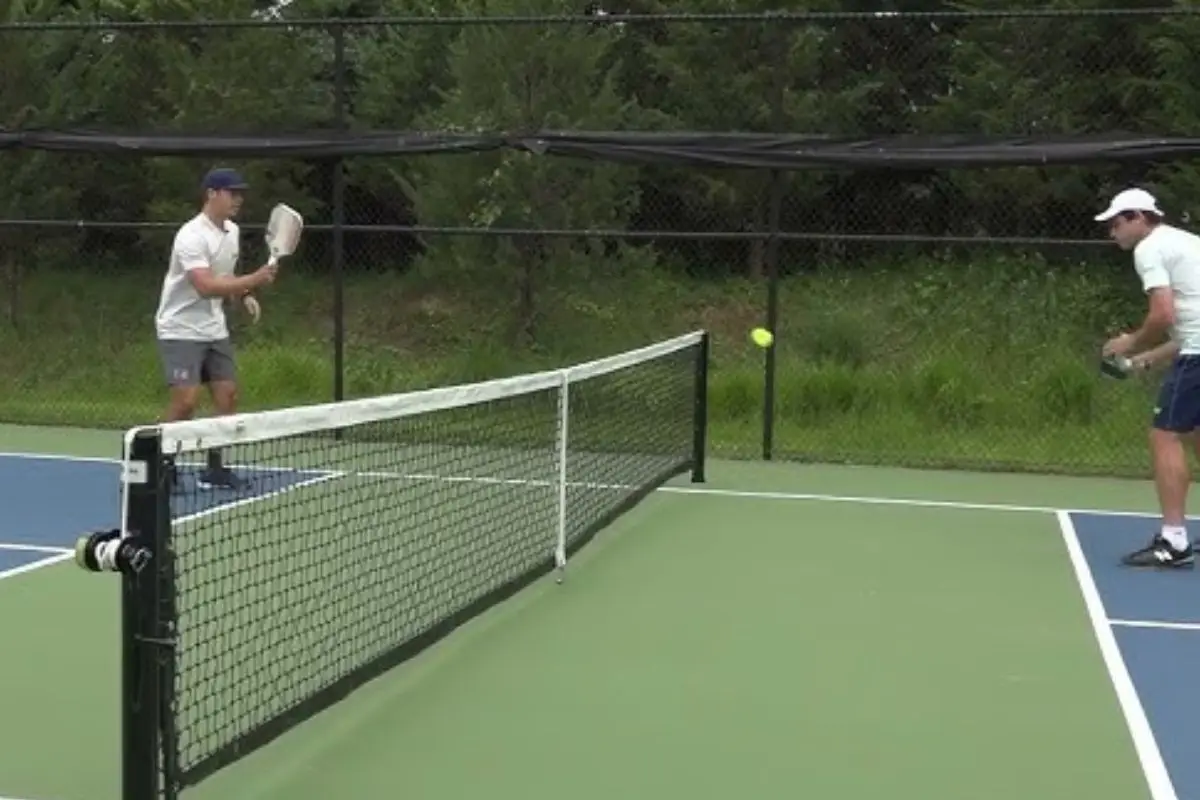Pickleball Attack Secrets: In pickleball, understanding when to transition from a defensive dink to an aggressive attack can be a game-changer. While dinking is an essential pickleball technique for controlling the rally, recognizing the right opportunities to shift gears and attack can take a player’s performance to the next level. Below are key moments in a dink rally when players should consider attacking.
1. Sideline Dinks: The Opening for a Precision Attack
Dead dinks in pickleball that lack spin and drop comfortably into the kitchen create ideal conditions for a successful attack. When such a dink lands near the sideline, it’s often the perfect opportunity to capitalize on a weakened defense.
By speeding up the ball down the sideline, players can exploit the opponent’s difficulty in covering the sideline. This can lead to an easy point if the player executes it correctly. Additionally, if the opposing team shifts to cover one side, their middle becomes vulnerable, offering another chance to attack.
Avoid attempting an attack in the middle of the kitchen, where angles are limited, and the opponents are usually positioned well enough to counter any offensive move.
2. Positioning for Success
The objective during a dink rally is not always to attack immediately. Instead, it’s often more effective to create opportunities for an attack by moving the opponent around and forcing them into uncomfortable positions.
When the ball is dinked just outside the opponent’s reach, forcing them to stretch or adjust their positioning, they become less capable of executing a clean return. This opens up opportunities to exploit gaps in their defense later in the rally.

3. Attacking High Dinks: Turning Errors into Offensive Opportunities
When an opponent dinks the ball too high—near or above the waist level—this provides a golden opportunity to turn defense into attack. A low-to-high motion with topspin helps keep the ball in bounds while creating a challenging situation for the opponent, who may end up popping the ball up, giving the attacking player an easy shot.
The key to attacking high dinks is to aim either for the opponent’s body, particularly their paddle-holding shoulder or into open spaces between the two players. These options are both effective, but it’s crucial for players to choose the one that they can execute with confidence.
View this post on Instagram
4. The Element of Surprise: Using the Lob at the Right Time
An advanced offensive move, the surprise lob shot in pickleball, can be a powerful tool when used correctly. Best employed after a few dinks when the opponents are settling into a rhythm, the lob catches them off guard.
Disguise is essential for a successful lob. The shot should initially look like a standard dink, only to be executed with added height and power. Topspin ensures that the ball stays in bounds and causes the opponents to scramble in an attempt to reach it.
5. Elevating Game Play: Reading and Reacting to Dinks
Improvement in pickleball depends on a player’s ability to read the rally and recognize when to switch from dinking to attacking. Not every dink requires an immediate offensive response, but being able to identify these moments can separate a good player from a great one.
Key areas to focus on include attacking high dinks, targeting the sidelines, and mastering topspin techniques.
News in Brief: Pickleball Attack Secrets
In pickleball, knowing when to attack during a dink rally is essential for maintaining control. Key moments to strike include sideline dead dinks, high dinks, and setting up attacks by moving opponents.
Players should also master the surprise lob to catch opponents off guard. Understanding when to switch from defense to offense can significantly enhance a player’s effectiveness on the court.
ALSO READ: How to Gain Total Control Over Fast Pickleball Volleys with One Simple Move

